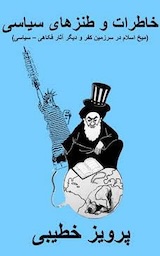Link
MajidNaficy 's Recent Links
The New Yorker: The Anguish of Looking at a Monet
MajidNaficy | 17 hours ago
0 21
The New Yorker: How Inflation Fooled Almost Everybody
MajidNaficy | 17 hours ago
0 19
The New Yorker: The Art of Taking It Slow
MajidNaficy | 17 hours ago
0 18
Yuval Noah Harari: “We Are on the Verge of Destroying Ourselves” | Amanpour and Company
Viroon | 13 hours ago
0 46
Category: None
Two years after Mahsa Amini’s death, what has changed for Iranian women? • FRANCE 24 English
Viroon | 14 hours ago
0 36
Category: None










Comments